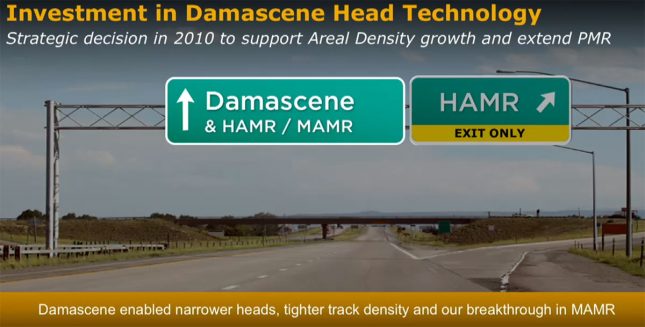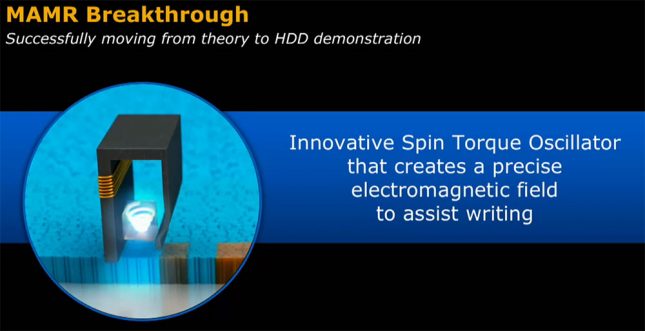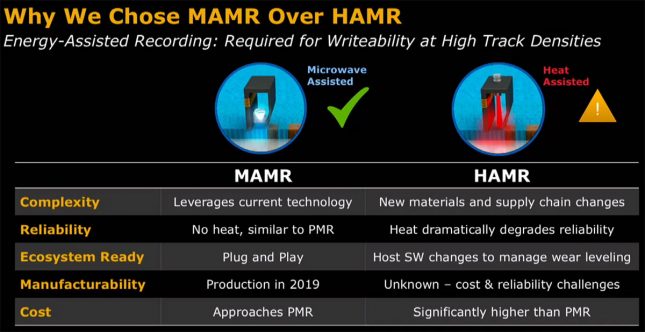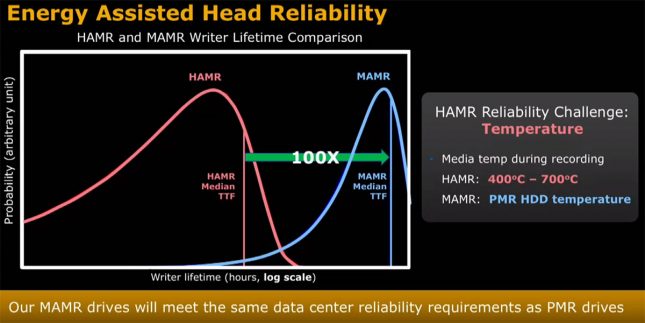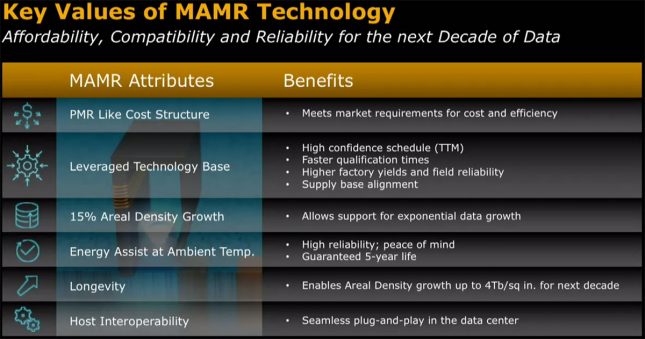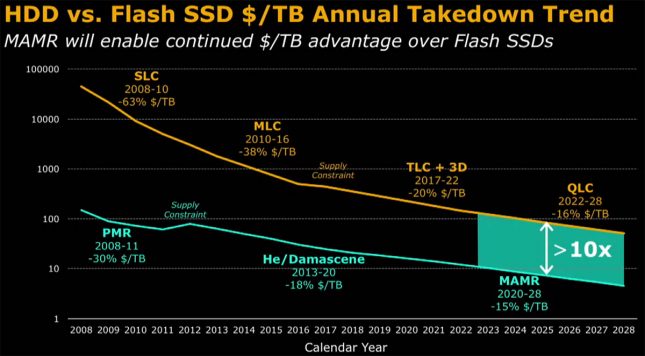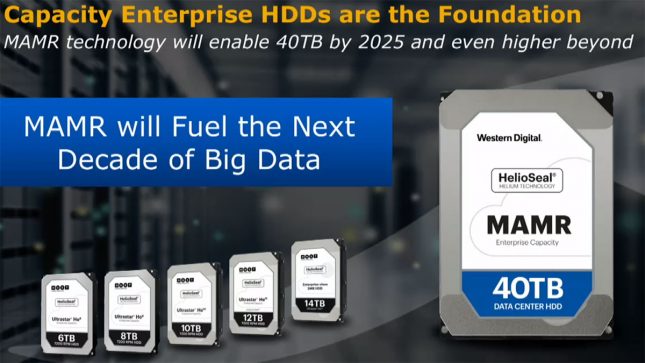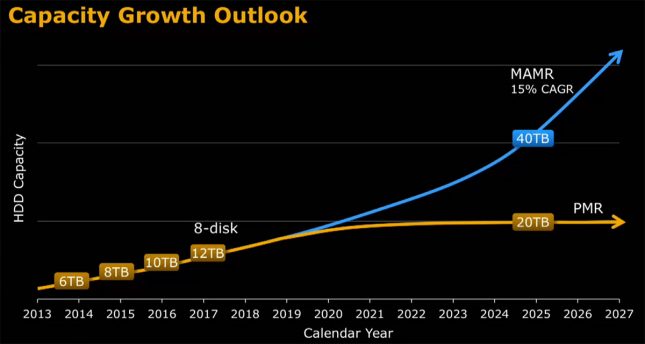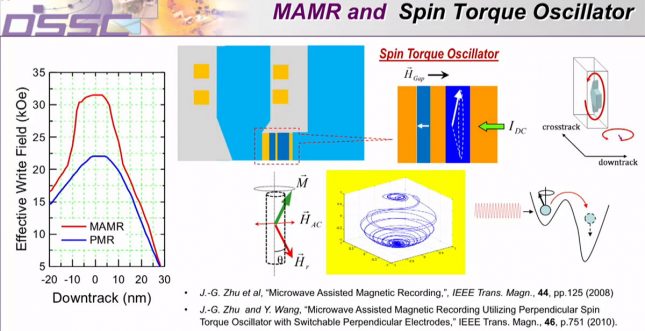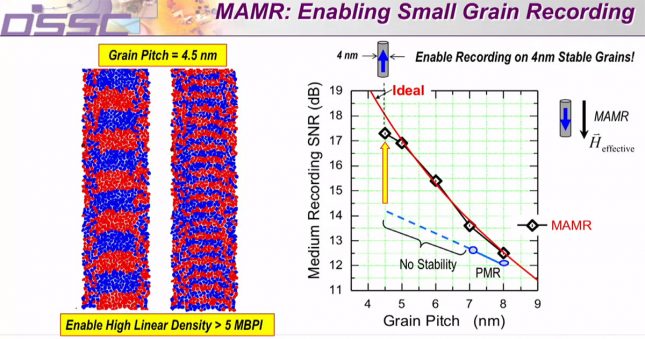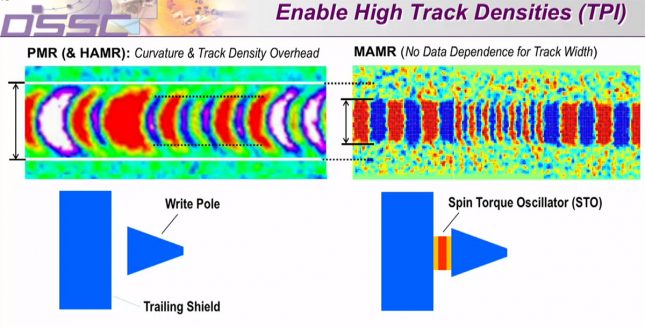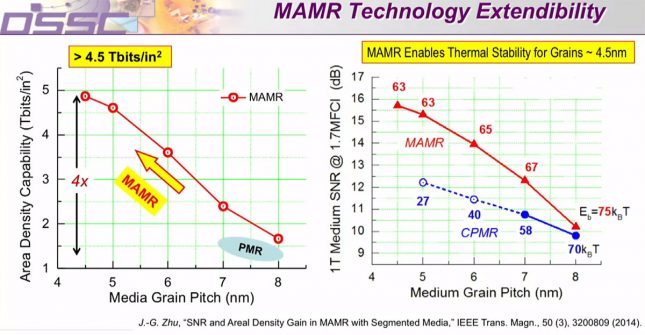WD Announces MAMR Breakthrough That Will Bring 40TB Hard Drives By 2025
Today, at its Innovating to Fuel the Next Decade of Big Data event, WD revealed a breakthrough in Microwave-Assisted Magnetic Recording (MAMR) technology that will allow the company to significantly increase the storage density and performance of future products. Western Digital has been working with MAMR technology for several years and has spent several hundred million dollars on research into MAMR and damascene.
Western Digital’s big breakthrough with MAMR technology comes with something called the spin torque oscillator they developed to aid in energy-assisted recording.
The breakthrough with MAMR has allowed WD to shift focus away from Heat-assisted magnetic recording (HAMR) that had a number of cost and reliability challenges that no one has been able to overcome just yet. The “spin torque oscillator” creates a microwave field that increases the ability to record data at ultra-high density without sacrificing reliability.
WD said that the choice between MAMR and HAMR were simple and provided the following slide. They noted that MAMR you get all the gain without all the pain and that it was an easy choice. Western Digital claims that it will soon be able to build hard drives offering up to 4 terabytes per square inch of capacity, which is around four times the average areal density of todays most advanced drives from any manufacture.
The media temperatures on the glass disks on HAMR based drives can range between 400C to 700C and that is bad for reliability. Drive makers have to worry about drive lifetimes and wear-leveling algorithms to battle the HAMR temperature issues. MAMR has virtually no heat and has the same temperatures as current PRM hard drives.
WD sees that MAMR technology should have a total cost of ownership (TCO) that is inline with current PMR drives and that is a big deal for the big data guys that are looking at capacity per rack, power consumption, cooling, maintenance, and acquisition cost. MAMR technology allows WD to keep the 15% areal density growth they have been able to achieve as well as a 5-year warranty that they place on products of this class.
WD also sees MAMR having a 10x lower cost per TB when compared to current TLC and future QLC NAND Flash technologies. This means that hard drives will still be the go to device for big data!
WD might have just announced a 14TB enterprise hard drive using host-managed Shingled Magnetic Recording (SMR) technology last week, but MAMR based drives are going to blow that away. WD says that they could easily could reach capacities of 40 TB by 2025 and even larger than that in the years beyond!
As the volume, velocity, variety, value and longevity of both Big Data and Fast Data grow, a new generation of storage technologies are needed to not only support ever-expanding capacities, but ultimately help our customers analyze and garner insights into our increasingly connected universe of data, said Mike Cordano, president and chief operating officer at Western Digital. Our ground-breaking advancement in MAMR technology will enable Western Digital to address the future of high capacity storage by redefining the density potential of HDDs and introduce a new class of highly reliable, ultra-high capacity drives.
Western Digital expects to begin shipping ultra-high capacity MAMR HDDs in 2019 for use in data centers and eventually this technology will also likely come out in the consumer market.
Professor Jimmy Zhu from Carnegie Mellon University was at the event this morning and covered MAMR and the “spin torque oscillator” in greater detail during his presentation. He is one of the original inventors of the MAMR technology.
The surface of a disk has a thin film that is made of grains that holds all your information bits when you record data to it. The grain size needs to be reduced at the same scale as you do the arieal density. The ideal grain pitch is 4.5nm and today with PMR technology is much larger than this.
The problem with this is that grains store energy and if you want to reduce the grain pitch then the energy stored in each is smaller and therefore becomes unstable. You need to put more energy into the smaller grains and that isn’t possible with PMR. One of the ways to address this is to raise the magnetic field. and that is done with the spin torque oscillator as it delivers tighter grain pitches and more focused energy.
One of the things that Western Digital loves about MAMR is that it great increases the Area Density Capability over current PMR technology. They are seeing greater than 4.5 Tbit/in2 and that means in the years to come there will be hard drives coming to market offering over 4 terabytes per square inch of capacity! That is amazing and one of the reasons WD is able to talk about coming to market with 40 TB drives by the end of 2025!

